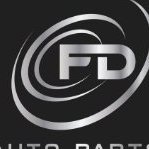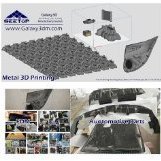-
Welcome to Auto Parts Forum
Whether you are a veteran automotive parts guru or just someone looking for some quick auto parts advice, register today and start a new topic in our forum. Registration is free and you can even sign up with social network platforms such as Facebook, X, and LinkedIn.
Melt mold casting
-
Similar Content
-
Understanding Auto Spare Parts: The Backbone of Vehicle Maintenance
By Muhammad,
- auto parts
- automotive
- (and 3 more)
- 0 replies
- 69 views
-
- 0 replies
- 563 views
-
- 0 replies
- 836 views
-
- 1 reply
- 927 views
-
- 0 replies
- 849 views
-
-
Similar Topics
-
By galaxy3dm
Car sun visor by Galaxy3DM factory
link hidden, please login to view [email protected]
whatsapp:8613143415646
-
By Erica Zhu Feilong Jiangli
Special casting has the characteristics of high precision, good mechanical properties, high productivity and good working conditions.
Special casting methods are as follows:
(1) Metal mold casting: the method of injecting liquid metal into a mold made of metal to obtain a casting.
Features: One mold multi-casting, high casting accuracy, good mechanical properties, but high cost, mainly used for mass production of copper, aluminum, magnesium and other non-ferrous alloy castings.
(2) Investment casting: a casting method in which wax is made into a pattern, coated with several layers of refractory paint, and heated to make the pattern melt, flow out, and bake into a pattern with a certain strength, then poured and removed.
Process features: take the melting pattern as the starting mode. The precision of casting is high, and it is a method of little cutting. Its equipment is simple and production quantity is not restricted. It is mainly used for mass production and mass production. The drawback is that the process is complex and the production cycle is long.
(3) Pressure casting: a casting process in which molten metal is rapidly pressed into the cavity of a metal mold under high pressure and solidified under pressure to obtain a casting.
Process features: high speed and high pressure is applied on the basis of metal mold casting to improve metal fluidity. It is mostly used for mass production of precision casting of non-ferrous alloys, such as aluminum, copper and magnesium.
(4) Centrifugal casting: a casting method in which molten metal is poured into a high-speed rotating mold to solidify the liquid metal under the action of centrifugal force.
Process features: compact structure, good casting quality. It is used to produce hollow castings.
-
By Erica Zhu Feilong Jiangli
The materials used in making molds are called molding materials. The sand molds are mainly molded sand and core sand, which are composed of sand, binder and additives.
1.Molding materials should have the following properties:
(1)Plasticity: molding sand and core sand are easy to form under the action of external forces.
(2)Sufficient strength: molding sand and core sand are not easy to destroy under external force.
(3)Fire resistance: molding sand and core sand are difficult to soften, sinter and adhere at high temperature.
(4)Permeability: molding sand and core sand must be easy to ventilate after compacting.
(5)Concession: molding sand and core sand can be compressed when cooled.
2.Pattern and core box
The pattern and core box are tools for making moulds and cores.
The shape of a casting to form a shape equivalent to the external shape of the casting. The core forms the inner cavity shape of the casting, and the core box is the tool for making the core.
Sand moulds and core boxes are used for multi-purpose wood casting. Metal mold, plastic mold and other patterns for special casting.
3.Modeling method
According to the different methods of modeling operation, it can be divided into:
(1)Manual molding: sand filling, compacting, mold lifting and so on mainly have the manual completion, the operation is flexible, the productivity is low, mainly uses in the single piece small batch production. There are many specific methods of manual modeling: whole mold modeling, three-box modeling, scraper modeling, false box modeling and so on.
(2)Machine Modeling: Mechanization of sand filling, compacting and moulding, high productivity and large investment, mainly used for mass production
4.Technical problems to be solved in sand casting
(1)The choice of pouring position: the main processing surface and large plane of the casting should be facing down, and the part of the Dian wall of the casting should be placed at the bottom.
(2)Selection of parting surface: plane parting surface should be adopted as far as possible, the number of parting surface should be as small as possible, so that all or most of the castings are placed in the same sand mold.
(3)Drawing inclination and casting fillet: In order to start the mold conveniently, the mold should have a certain drawing inclination, the higher the mold, the smaller the slope value: the inner wall inclination is larger than the outer wall inclination. In order to prevent the casting from producing stress and cracks at the wall joints and corners, the casting wall joints and corners should be designed into rounded corners.
-
By Erica Zhu Feilong Jiangli
(1) the concept of casting
Molten metal is poured into the mold cavity, and after solidification and cooling, a certain shape of parts or parts blank is obtained. This method is called casting. The blank or parts obtained by casting are called castings. Castings generally account for about 20% of the vehicle's self weight, ranking only second after steel consumption.
(2) casting method
Sand mold casting: Liquid metal fills the mold cavity completely by gravity, and the raw material for forming the mold is mainly sand.
Special casting: all kinds of casting methods other than sand casting.
(3) characteristics and application of casting
It is easy to shape and adaptable.
The production cost is low and more economical.
The microstructure and properties of casting materials are poor.
Casting is generally used in the manufacture of automobile box, shell, bracket parts, such as: engine cylinder block, cylinder head, intake (exhaust) manifold, crankshaft, camshaft, ram speed box shell, chassis rear axle housing, killing bracket, brake drum, brake disc.

-
By Garage Gurus
Visit Garage Gurus fmgaragegurus.com for more tips and information on diagnosing and troubleshooting engine problems in your ...
-







Recommended Posts
Create an account or sign in to comment
You need to be a member in order to leave a comment
Create an account
Sign up for a new account in our community. It's easy!
Register a new accountSign in
Already have an account? Sign in here.
Sign In Now